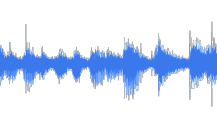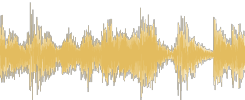Audio watermarking is widely used for leaking source tracing. The robustness of the watermark determines the traceability of the algorithm. With the development of digital technology, audio re-recording (AR) has become an efficient and covert means to steal secrets. AR process could drastically destroy the watermark signal while preserving the original information. This puts forward a new requirement for audio watermarking at this stage, that is, to be robust to AR distortions. Unfortunately, none of the existing algorithms can effectively resist AR attacks due to the complexity of the AR process. To address this limitation, this paper proposes DeAR, a deep-learning-based audio re-recording resistant watermarking. Inspired by DNN-based image watermarking, we pioneer a deep learning framework for audio carriers, based on which the watermark signal can be effectively embedded and extracted. Meanwhile, in order to resist the AR attack, we delicately analyze the distortions that occurred in the AR process and design the corresponding distortion layer to cooperate with the proposed watermarking framework. Extensive experiments show that the proposed algorithm can resist not only common electronic channel distortions but also AR distortions. Under the premise of high-quality embedding (SNR=25.86dB), in the case of a common re-recording distance (20cm), the algorithm can effectively achieve an average bit recovery accuracy of 98.55%.
翻译:音频水标记被广泛用于渗漏源跟踪。 水标记的稳健性决定了算法的可追溯性。 随着数字技术的发展, 音频重新记录(AR)已经成为窃取秘密的高效和隐蔽手段。 AR进程可以极大地摧毁水标记信号, 同时保存原始信息 。 这提出了在现阶段对音频水标记的新要求, 也就是说, 要对AR 扭曲进行强力分析。 不幸的是, 现有的算法没有一个能够有效抵抗AR 攻击, 因为AR 过程的复杂性。 为解决这一限制, 本文建议 DeAR, 这是一种基于深层学习的音频重新记录防水标记。 在基于 DNN 的图像水标记的启发下, 我们为音频载体开创了一个深的学习框架, 在此基础上, 水标记信号可以有效嵌入和提取。 同时, 为了抵抗AR AR 攻击, 我们仔细分析在AR 过程中发生的扭曲, 并设计相应的扭曲层与拟议的水标记框架合作。 广泛的实验表明, 拟议的算法不仅可以抵制通用的电子频道扭曲, 还可以抵制AR 的反射线标记。 (2085 ) 平均翻校平 25, 可以 。 根据高质量 的逻辑分析, 可以有效地进行一个普通的复制。 (2085 。




































